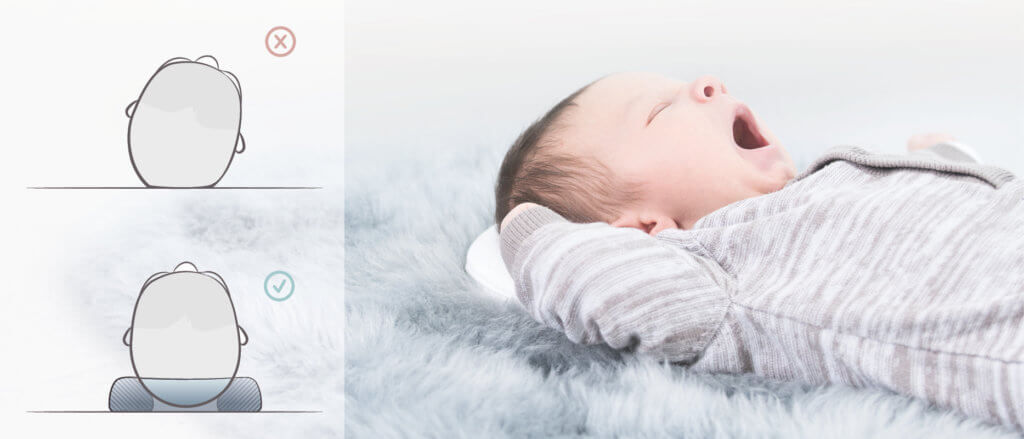
HOW OFTEN DO POSITION-RELATED DEFORMITIES OCCUR?
Since the 1990s, physicians recommend the supine position for safe baby sleep. This reduces the risk of sudden infant death syndrome. As a side effect, however, the number of head deformities in babies caused by the position is also increasing. One reason for this is that the top of the baby’s skull is still very soft after birth and in the first few months of life, and the muscles are not yet fully developed.
More and more babies suffer from skull deformities of various degrees of severity. The frequency with which these skull asymmetries occur varies. Whereas in the 1970s only about every 300th child was affected, present-day scientific studies show that the number of infants affected by head deformities varies between 10 and 48 percent. More recent publications tend to assume a higher prevalence, which can be traced back to the fact that babies have been lying on their back since the 1990s and have been medically recommended to avoid sudden infant death.
Most common are positional deformities, which may affect any baby. Lying on the back for a long time can lead to brachycephaly, a flat head. If the head keeps falling in the same direction, plagiocephaly, a crooked skull, may develop. Although these deformities often balance out during growth, in severe forms, permanent deformities and long-term consequences such as jaw misalignment or movement and posture problems can not be excluded.
